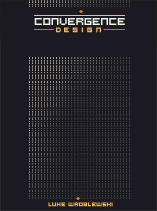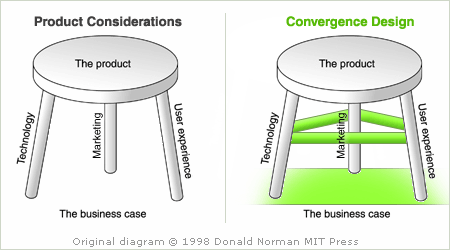 From its conception, Functioning Form was designed to be a proving ground and repository for ideas that might ultimately help develop a printed work. It was my hope that overlaps between the content published here would emerge and that a central theme could bring them all together. Ironically, that theme is becoming convergence design: a methodology for optimizing the intersections between products, processes, and content.
From its conception, Functioning Form was designed to be a proving ground and repository for ideas that might ultimately help develop a printed work. It was my hope that overlaps between the content published here would emerge and that a central theme could bring them all together. Ironically, that theme is becoming convergence design: a methodology for optimizing the intersections between products, processes, and content.
Convergence design is practiced by crossover artists working within the synapses between function, form, and finance. It mediates end user needs and business goals; it unites art and science, and couples engineering and aesthetics.
Convergence design rationales the consolidation of diverse feature sets and multifarious users while generating products, processes, and content with complementary visceral, behavioral, and reflective characteristics.
Convergence design is important because convergence is everywhere. From software to digital devices to science, unification is a defining characteristic of the next generation of products and processes.
Projects that embody convergence design principles (example 1, example 2) blaze horizontal paths through organizations and build human-centric combinations of information and interactions. Because these projects span multiple disciplines, they rely on core design principles that are common to many fields of study.
Convergence design projects succeed through an appropriate balance of constraints and effective problem solving techniques. These projects result in products that recognize and incorporate the processes around their use in their design. Even seemingly simple projects can quickly become exercises in convergence design when overlapping patterns are recognized and incorporated in the design process.

There are no “convergence designers”, because convergence design is practiced in all disciplines. Visual designers who learn to program, marketing teams that employ anthropologists, and computer scientists who create music practice convergence design. They learn how through cross-disciplinary studies, diverse roles, and a continual interest in the unknown.
As this concept is a work in progress, I expect its definition, exemplary projects, and methodology will be continually refined on Functioning Form through interactions with other designers, scientists, engineers, and more. So please drop me a note if you have any ideas or comments. Your feedback helps this concept mature.